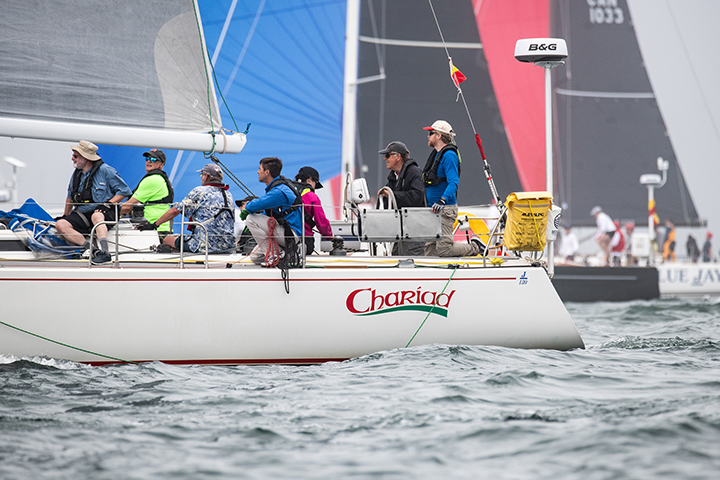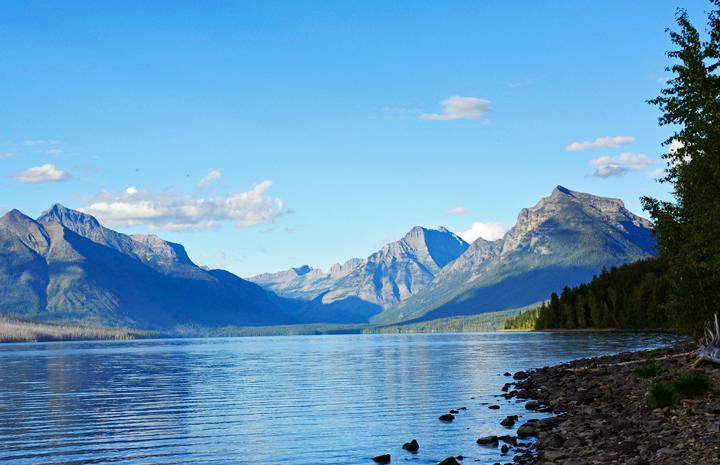“May the Force be with You” – a Leadership Lesson

“Everything I know about leadership I learned on my sailboat.” That may be the title of my next book.
Little kids sail on Optimists. Older men and women cruise and race sailboats worldwide. Professional sailors are celebrities racing high-tech boats in the America’s Cup and other regattas.
I raced my 43-foot J 130 sailboat, CHARIAD, from Marblehead, Massachusetts, to Halifax, Nova Scotia, this summer. Preparing for and executing on our plans for competing against 80 well-prepared boats required the same skills as launching a new company or product in a competitive marketplace.
Some sailors excel as individuals on their own boats, such as a Laser. For them, the challenge is personal – the physical mastery of the boat by yourself while competing in the complexity of changing wind and waves. Others race on boats such as J 24s with two or three other crew members trimming the sails. A talented skipper can do well directing the crew on sail trim as the wind changes. The skills required for success are the same as those of an entrepreneur or CEO of a startup or small company.
My recent sailboat racing has been on larger boats with eight to ten crew members. As skipper, I cannot tell nine team members what they should be doing every minute of the race. Often, the team members forward in the boat cannot even hear what the skipper is saying. Success requires a leadership structure within the team. We practice and perform as a team with each crew member having a specific role. Crew handling sails on the bow of the boat and those trimming sails in the cockpit operate as largely independent sub-teams.
My role as skipper is to provide overall leadership of the team, communicate goals, and be the orchestra leader signaling when we will tack and jibe. Each team member must know their role when we launch a spinnaker or tack the boat from port to starboard – wind on the right side of the boat.
Sailboats from Canada and the US have raced from Marblehead to Halifax for 118 years – probably the longest-running sailboat race in the world. The boats are racing for three to four days in the open water of the North Atlantic with strong currents and changing weather. Fog and cold nights are typical. Every boat must prepare for high wind and no wind and for survival with what is on the boat.
To prepare for the race, I divided up the responsibilities for getting us to the starting line. Individual crew members were responsible for provisioning, logistics, boat preparation, and safety. We had a Compliance Officer dealing with the race organizer’s requirements and international travel documentation.
During the race, we divided into two watches responsible for sailing the boat four hours at a time with a watch captain. We had a navigator responsible for getting us to Halifax. The navigator and I, as captain, floated between the watches.
Before the race started Sunday afternoon, we did a computer modeling analysis of the expected wind and current flows over the next three days and our boat’s performance potential. Based on this analysis, we sketched a path above and below the straight lines from Marblehead to the southern tip of Nova Scotia and up the coast to Halifax. That plan is roughly what we followed.
Usually, this race is dominated by wind from the Southwest and boats sail mostly with their big downwind spinnakers all the way to Halifax. This race was sailed in light wind from the East. We sailed directly into the wind – light wind for most of the race.
Sailing is a complex combination of technology and performance art. On a normal race day, we closely follow the boat’s quantitative performance against its performance potential as projected by computer modeling. We are tracking the wind and current patterns for the best positioning against current and future values.
Steering the boat at 3 AM in a deep, cold fog and light wind called on different skills. I faced two challenges. The first was my personal challenge – how to keep the boat going in these difficult conditions. The second was how to share what I know with the team and give the team space to master these skills. I am a good helmsman, but I can only be at the helm for short periods of time. The only way we could get to Halifax was for my teammates to drive us there.
A lot of data is on display: boat speed; wind speed; wind direction; heading; etc. When racing, I am monitoring this data and trying to optimize the boat’s performance. I realized while trying to keep the boat moving in the dark that the lights and swirling data were distracting. I did better relying on what I was experiencing and sensing – the heel – tilt – of the boat, the wind on my face, the sound of the waves, and the dim line between the fog and the water. Yes, I glanced at the illuminated compass to be sure we were on course, but being in touch with my senses was far more important than the distracting lights and data. I turned them off.
Two other crew members were good helmsmen. We spelled each other for the particularly difficult times. Their initial instinct was to depend on the instruments. My coaching and encouraging them to turn off the instruments and get in touch with their senses was later described as, saying, “May the force be with you.”
When I was off watch laying on the sails below, I knew how we were doing by the heel of the boat and the sound of water slapping on the hull. I knew when we slowed down and were off course. Yes, we did a couple of circles in the fog. I did not need to look at instruments to know how we were doing. I could feel it.
While my first instinct might be to run on deck and shout, “What’s going on?,” coaching others to be better helmsmen was required for us to be competitive and even to get to Halifax.
We did get to Halifax and did OK in the race. Some boats finished a full day later than we did. This is the first year we raced this boat. We learned a lot about the boat and ourselves as sailors and team members.
I know that I grew as a leader of this team. I set goals, assigned responsibilities, learned from the team, and let the force be with me.
Crossing the Rocky Mountains
Seven years ago, I retraced most of the Lewis and Clark Trail of Discovery. I started in North Dakota and ended with my feet in the Pacific Ocean at the mouth of the Columbia River. When Lewis and Clark started up the Missouri River in 1804, they did not know the Rocky Mountains existed. I crossed the Rockies in Glacier National Park. I stood on the banks of this lake, just west of the mountains, in wonder at their accomplishments.
